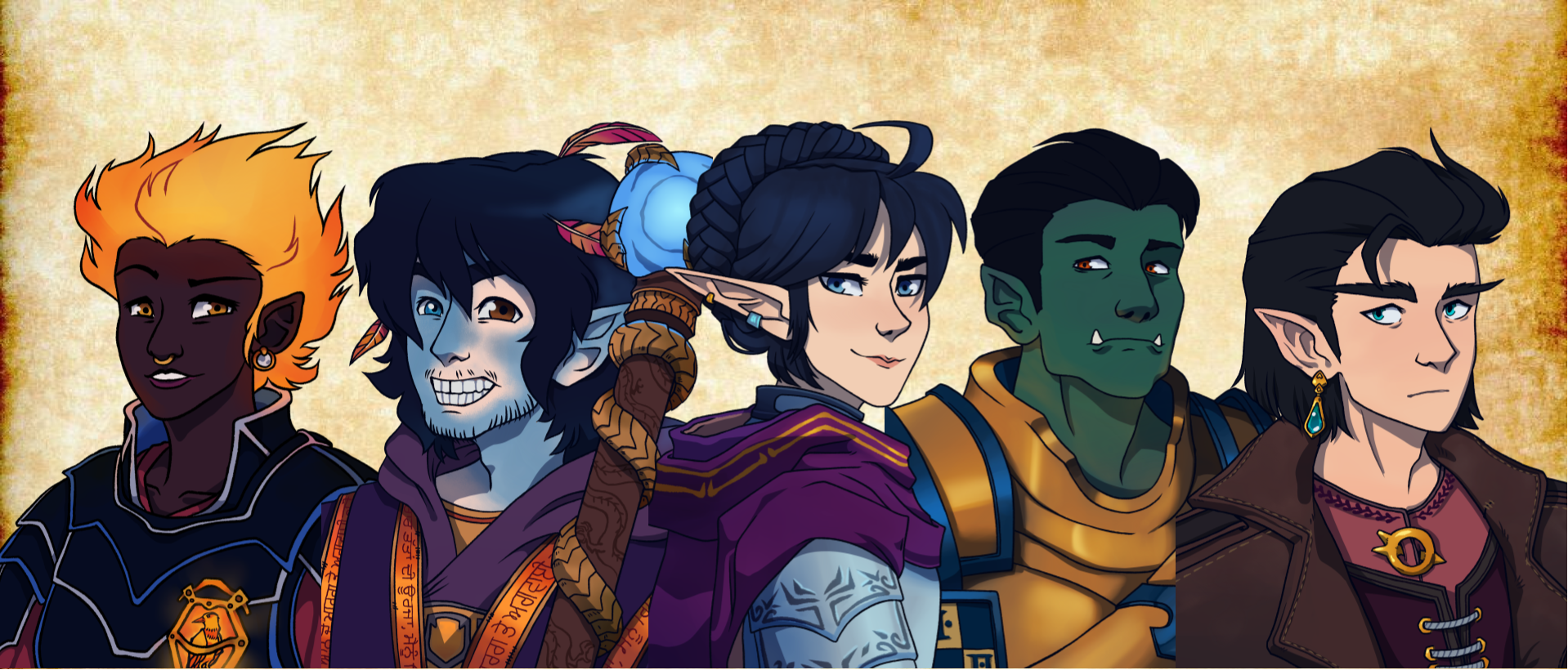Editorial Management

It’s funny how you manage to pick up interesting skills in the unlikeliest places. More so than any class, online course, or mentorship program, the website I created for the Glowing Fool is probably the biggest contributor to many of my most marketable skills today. It served as a very practical introduction into network administration which spawned my many homelab projects , as well as a return to form for much of my writing . But perhaps most useful of all is that this website has given me ample opportunity to learn a bit more on how to manage people.
My initial vision for the Glowing Fool website was two-fold. It was to serve as a source of information for anyone interested in the initiative. If someone was looking for an opportunity to play Dungeons & Dragons (D&D) in Hong Kong, this website would serve as a beacon for those individuals to find us (and learn a little bit more about what we were doing). But the website also served the secondary purpose of being a repository of tips, tricks, and insights on how to play/run/enjoy D&D games. And this would come in the form of the various blog posts that have come to populate the website.
At first these blog posts were almost exclusively written by me. But there is strength in diversity, and I knew that if this blog was to be successful, it needed different voices, not just my own. So I went to work recruiting my friends to contribute content to the Glowing Fool. Thus, I went from being the sole writer for this blog, to it’s editor. And with it, a new host of challenges.

The Glowing Fool is not a business, it’s a passion project of mine, something I do on top of my professional career. So to my friends, writing for the website is not so much a job or obligation, as it is a personal favor to me (and perhaps an outlet for their own creative energy). So how do you “manage” this type of arrangement?
I’ve found that the most pleasant (and effective) experience getting my friends to contribute to the website, always involved these three things:
- Be clear about what you want.
- Where do they fit in the story?
- Set deadlines.
We are going to take a look at each in turn. And while these are in the context of writing contributions for a website, I don’t see why they can’t be applied to other types of volunteer activities as well.
Be clear about what you want.
When I’m asking a friend if they would be interested in contributing to the Glowing Fool blog, the absolute worst thing I can do is simply ask “Hi friend! Would you be interested in writing for the blog?” This is because such a simple open-ended (and vague) request fails to properly convey what it is I want from them, and thus fails to give them an idea of how much time and effort helping me would entail.
I have found that whenever I for assistance, it pays to be as specific as possible. This includes laying out exactly what I want them to do, and what I want to achieve. In the context of the Glowing Fool website blog entries this meant coming to them with:
- The exact topic that I feel they would be able to write about.
- The approximate length of the article itself.
- Why I felt they would be a good authority for writing such an article.
The reason for doing this is so that I can make it as clear as possible to my contributors what my expectations are, and it helps them understand exactly what kind of commitment they are making. Clear expectations and goals also makes it easier for my contributors to produce their deliverables.

A good example of clear expectations on the Glowing Fool website is the Player Profiles series. Each time I reached out to a friend to contribute a profile, I made it clear that the purpose of the post was for readers to see that D&D players can come from all walks of life. The primary focus would be on highlighting the diverse background of the contributors, as well as showing the different ways D&D can be enjoyed. And as part of the “ask” for writing an entry, I gave them a clear format for the article (with the additional request that each article be approximately 700 words.):
- Tell us about yourself, what’s your background?
- Tell us about your D&D character.
- Why do you play D&D?
Communicating expectations and setting clear goals and deliverables has the ability to make every project easier to accomplish.
Where do they fit in the story?
In D&D, the story of the game can go in any number of different directions. These are all dictated by the players and what they contribute to the story. But the Dungeon Master (DM) should at least have some idea of what loose themes they want to achieve as the story unfolds. The same could be said in editing a website. Contributors offer their own flavor of writing, their own perspectives, opinions, and experiences. And this all coalescences in the article they provide. But a good editor (like a good DM) should be able to weave these different contributions into a compelling story across the different entries in the website.
One way of accomplishing this in D&D is for the DM to share with their players the general idea of what kind of story they want to tell. Doing so gives the players the necessary information to weave their characters’ stories in any way they want, but also helps them help the DM keep the story on track.
As an editor of a website, I can do the same thing by telling my writers what larger goal I want to accomplish with their articles. One example of this are a pair of posts that we recently published on the website, “What a DM looks for in a Good Player” and “What Players Look for in a Good DM” . These two posts were written by two different authors independently. But when I had first reached out to each of them, along with laying out what kind of article I wanted, I also told them that an “inverse” article would be published at around the same time. If you read these two articles, they each highlight their respective author’s individual style, but still accomplish the shared goal of a holistic set of posts.
It is always important to emphasize why the work someone is doing is important. By sharing the “story” (you could also read it as “strategy”) behind their work, it serves the dual benefit of letting them know the significance of their contribution, as well as let them cater it to best meet your needs.
Set deadlines.
“Would you be able to give me a draft of your article within the next 2-weeks?” Believe it or not, but the inclusion of this request whenever I ask a friend to contribute to the website is often times the difference between having an article to post or not. Whenever I ask friends to contribute a post to the Glowing Fool website I will often set the arbitrary deadline of 2-weeks. Not necessarily because I need to post the article by then, but just so that there is a deadline for it’s own sake.
From my experience, the inclusion of a deadline helps make the request concrete. Rather than being some ephemeral idea, a task to eventually do, the deadline makes it clear that the task should be done by this time. And that usually drives action and initiative so that the article may actually be written.
Bonus: Show gratitude.
Regardless of what it is your are doing, it is always a good idea to show gratitude and appreciation to the people who have helped you. Acknowledge that the work that went into helping you must not have been easy for them. They took time out of their busy schedules to help, and any show of appreciation will certainly go a long way. And besides, keeping good relationships with the people who can help you will certainly make them more willing to help in the future. 😉



